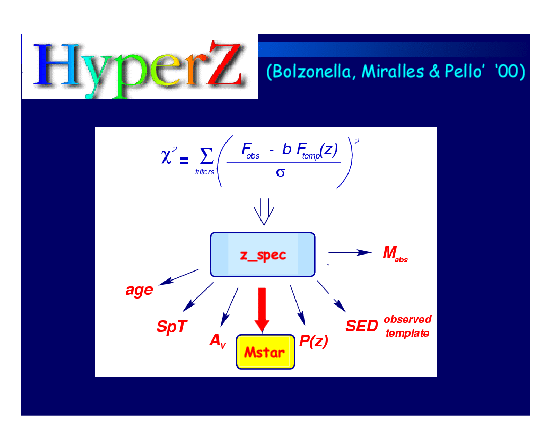
Using the same photometric catalogues used for photometric
redshifts we have modified
HyperZ code (Bolzonella, Miralles & Pello' 2000) to estimate photometric
stellar Mass content:
N.B.: when used in Hyperz instrumental
CFHT filters are convolved with the CCD transmission function of the "EPI"
CCD. We use AB magnitude system.

Assuming a Star formation history : SFR=Mgal/tau * exp(-age/tau)
Best fit to model parameters (age, SF, dust,....etc)
==> Mass processed = int [ sfr(t) * dt
]
==> Stellar Mass = int [ sfr(t) * (1- R(t))
* dt ] where R(t) is the gas return fraction
TEST AND SIMULATIONS
1- Bruzual & Charlot 2003 spectral energy modeling code :
Salpeter IMF,
SF history: tau=0.1,0.3,1,2,3,5,10,15,30,infinity Gyrs
age=0.01 to age of universe(z)
dust content: Av=0 to 1.8 mag.
dust extinction law = Calzetti 2000
2- SED simulated at the same depth as in
VVDS images
RESULTS:
1- Stellar Masses are
whithin a factor 2 using different codes (HyperZMass & Lucia-ZMass)
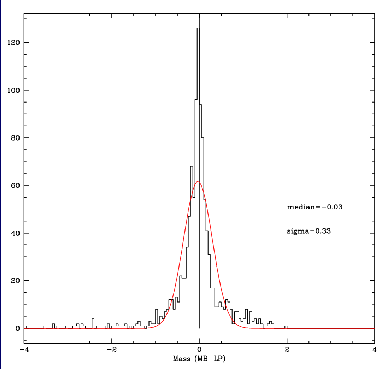
2- Using UBVRIJK
bands:
Stellar Masses recovered are within a factor 2 (sigma=0.29 see below),
but problems in models with age<0.1 Gyrs, which
underestimate the stellar mass (black points in the plot
below)
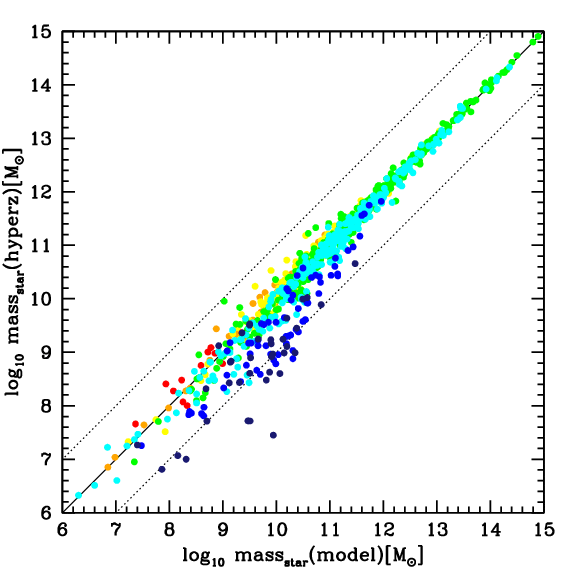
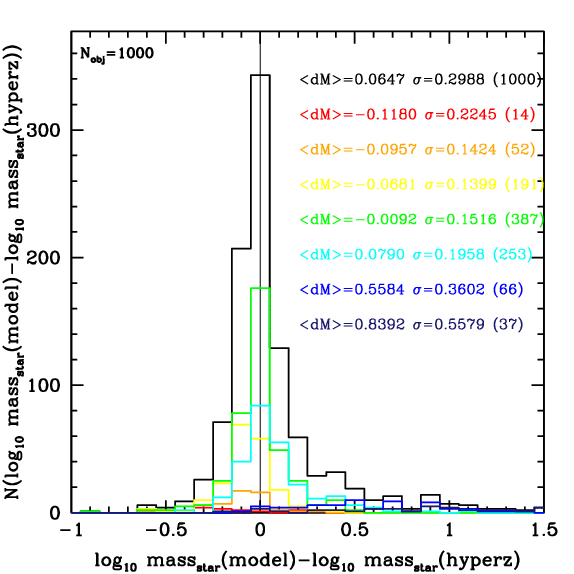
age vs. age: excess of age<0.1 models :
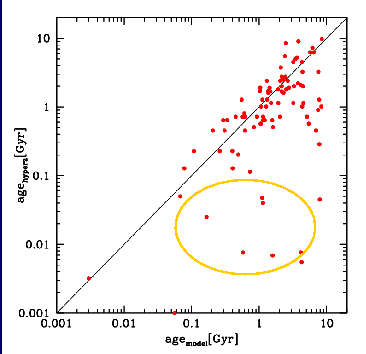
3- Using age>0.1 Gyrs the fit improve : the
total dispersion become sigma=0.21 (see below
histogram)
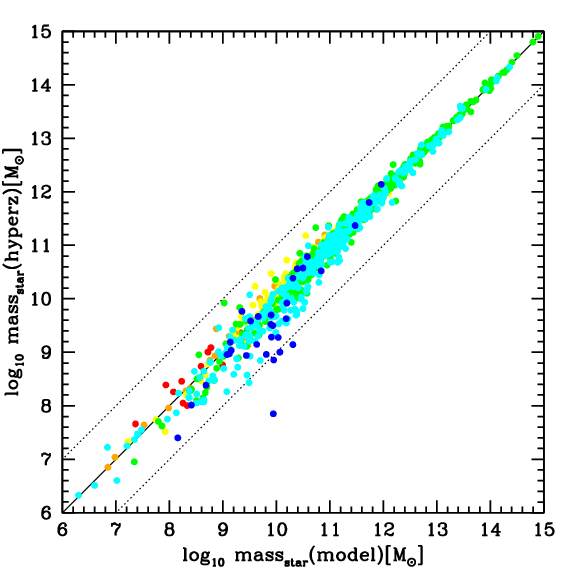

4- Using only BVRI
photometric bands: the total dispersion increase to sigma=0.58 (see below histogram)
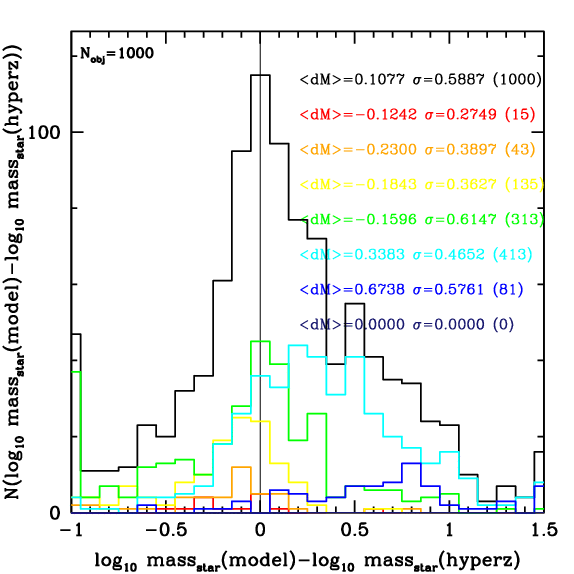
5- Using UBVRIJK
+ IRAC (3.6, 4.5, 5.8, 8 micron) photometric
bands: the total dispersion decrease to sigma=0.18 (see below histogram)
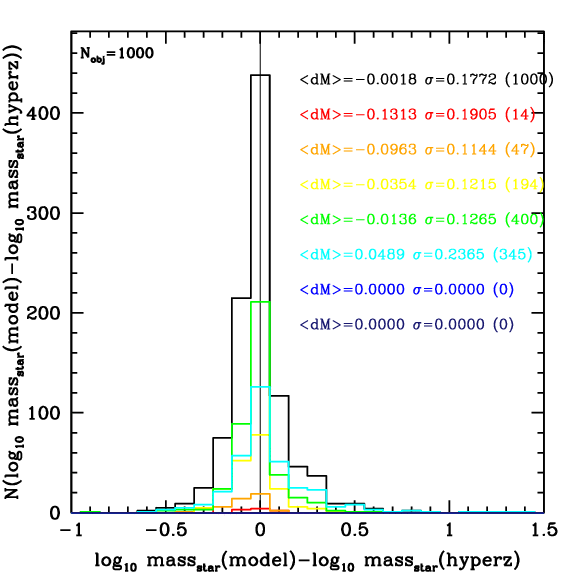
Now you can take a look at the results web page.
last update: February 24, 2005